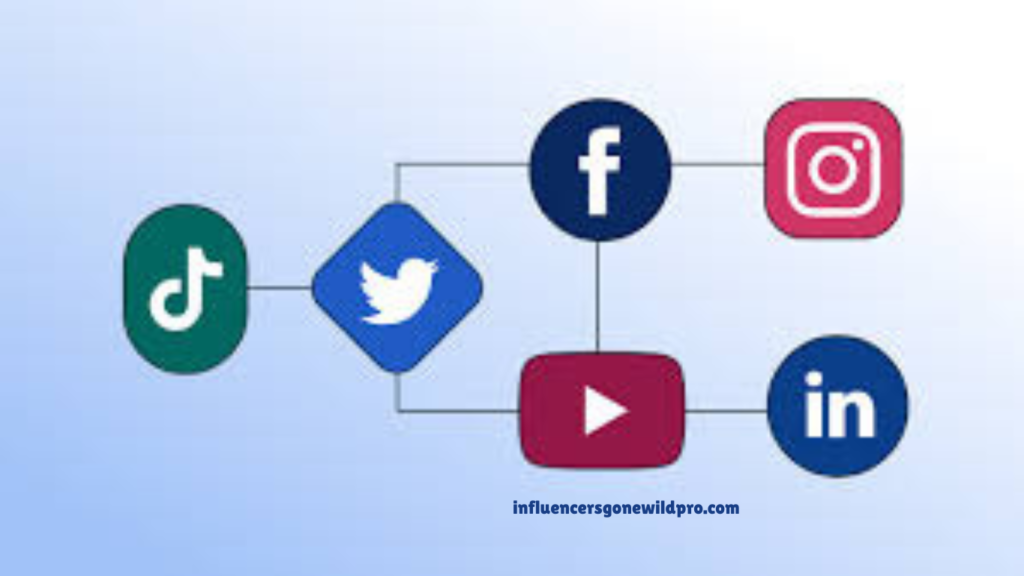The importance of having a professional portfolio cannot be overstated. A portfolio is no longer something that only artists, designers, or photographers need. Today, anyone who works in a creative or professional field benefits from building a strong digital showcase. Whether you are a writer, developer, marketer, architect, or consultant, a portfolio website has become the most effective way to display skills, highlight achievements, and attract opportunities.
Platforms like Adobe Portfolio, MyPortfolio, and other free portfolio sites have made it easier for professionals at all levels to create digital showcases without technical complexity. While traditional resumes remain important, most employers and clients want proof of ability, and that proof is best demonstrated through a well-presented portfolio website. This article explores the value of portfolios, examines the advantages of Adobe’s solutions, looks at the role of free platforms, and explains how you can use them to build a personal brand that stands out.
The Meaning of a Portfolio in the Digital Age
At its core, a portfolio is a collection of selected work that represents your skills, style, and accomplishments. For decades, portfolios existed in physical form, especially in fields like art and photography where professionals carried binders of printed samples. With the rise of the internet, physical collections gave way to portfolio websites, and today the digital format dominates across every creative and professional field.
The purpose of a portfolio has expanded beyond simply showing projects. It now serves as a central hub where potential employers, clients, and collaborators can evaluate your expertise, learn about your background, and contact you directly. A portfolio works as a silent salesperson, representing you online twenty-four hours a day. Someone searching for a designer, a writer, or a photographer can find your portfolio website, browse through your projects, and form an opinion about your ability before even speaking with you. In this sense, a portfolio has become one of the most powerful tools for career growth.
Adobe Portfolio: A Professional Choice
Among the many tools available, Adobe Portfolio has become one of the most respected solutions for creatives who want polished and professional portfolio websites. Since it is integrated with Adobe Creative Cloud, it appeals strongly to designers, photographers, and artists who already rely on tools like Photoshop, Illustrator, and Lightroom. Adobe understood that creative professionals needed a simple way to present their projects online without needing to learn coding or web design, and that is exactly what Adobe Portfolio delivers.
The strength of Adobe Portfolio lies in its simplicity. A user can set up a complete website in just a few hours, selecting from pre-designed templates that focus on visual presentation. Unlike some free portfolio sites, Adobe ensures that the design does not distract from the work. The templates are clean, responsive, and optimized to highlight images, text, and layouts in the best possible way.
Another advantage is the seamless integration with Behance, Adobe’s creative network. With one click, a user can publish work on both their portfolio website and their Behance profile, reaching a larger audience of creative professionals and potential clients. For photographers, the Lightroom integration is particularly valuable since edits can be synced directly with the Adobe Portfolio site, saving time and effort.
While some may argue that Adobe Portfolio requires a subscription through Creative Cloud, its value becomes clear for anyone serious about presenting their work professionally. It eliminates distractions such as ads or third-party branding that are often present on free portfolio sites, and it provides a sleek, polished showcase that leaves a strong impression on visitors.
MyPortfolio: Simplicity for Creative Professionals
Another well-known tool is MyPortfolio, which is often considered a lighter and simplified version of Adobe’s solution. While the two share similarities, MyPortfolio caters to those who want an even faster setup with fewer customization options. It is popular among students, freelancers, and photographers who want a straightforward platform that works without technical barriers.
The appeal of MyPortfolio lies in its accessibility. For someone who does not want to spend days adjusting layouts or experimenting with complex design features, this platform provides an easy path to publishing work online. It may not offer the same depth as Adobe Portfolio, but for many professionals, a streamlined solution is exactly what they need.
Because it is part of Adobe’s ecosystem, MyPortfolio carries the same advantage of credibility. Clients or employers recognize the Adobe name, and that association can add professionalism to your portfolio website. While customization is more limited compared to other options, for many users, the ability to create a presentable showcase in just a short time outweighs the need for advanced design control.
Free Portfolio Sites: Accessible Options for Beginners
Not everyone is ready to invest in premium tools, and this is where free portfolio sites play a valuable role. These platforms provide hosting, templates, and basic customization at no cost, making them especially attractive to students, entry-level professionals, or individuals testing their presence online. A free portfolio site may not offer the same polish or branding freedom as Adobe’s solutions, but it creates an opportunity to build a digital presence without financial commitment.
The main advantage of free portfolio sites is accessibility. Anyone with an internet connection can set up a portfolio within hours, regardless of their background or budget. This democratization of digital showcasing has helped countless creatives take their first steps into the professional world. For many, a free site serves as a starting point that later evolves into a more advanced portfolio website once they gain experience and resources.
The downside is that most free platforms come with limitations. They often display the platform’s branding, restrict customization, and may not provide features like custom domains or advanced analytics. For professionals aiming to stand out, these limitations can make the portfolio appear less polished. Still, free portfolio sites are far better than having no portfolio at all, and they remain a useful option for experimentation and learning.
Choosing Between Adobe Portfolio, MyPortfolio, and Free Portfolio Sites
Deciding between Adobe Portfolio, MyPortfolio, and free portfolio sites depends on individual goals and career stage. A beginner might feel comfortable starting with a free option, as it requires no investment and provides a space to experiment. As skills grow and projects become more professional, transitioning to MyPortfolio or Adobe Portfolio adds credibility and polish.
For experienced professionals, especially those working in design, photography, or any Adobe-related field, Adobe Portfolio is often the best choice. Its integration with Creative Cloud streamlines the process of uploading and updating work, ensuring that the site stays current without extra effort. For those who value speed and simplicity over advanced customization, MyPortfolio can serve as a middle ground.
The important thing is not the platform itself but how the portfolio website communicates skill and value. A well-chosen set of projects, presented in a clean and thoughtful manner, has more impact than a portfolio filled with dozens of average samples. In the end, the content matters more than the platform.
Building a Strong Portfolio Website
Creating a portfolio website is not simply about uploading work. It requires strategy, storytelling, and careful curation. A strong portfolio tells a story about who you are, what you do, and why you stand out. It guides the visitor through your best work, highlights your strengths, and leaves them with a clear impression of your capabilities.
The first step is selecting only the best projects. Many professionals make the mistake of uploading everything they have ever done, but this often overwhelms visitors. A carefully chosen collection of work communicates focus and quality. Each project should include a short description, explaining the goal, process, and outcome. This narrative gives context and helps potential employers or clients understand not just what you created, but how you think and work.
Design also plays a crucial role. Whether you use Adobe Portfolio, MyPortfolio, or a free portfolio site, the layout should be simple and clean. Clutter distracts from the work, while a minimalist approach highlights the projects themselves. High-resolution images, thoughtful typography, and consistent color schemes create a professional feel.
Search engine optimization, or SEO, should not be overlooked. A portfolio website that does not appear in search results may go unnoticed. Using keywords such as portfolio, Adobe Portfolio, free portfolio sites, and portfolio websites within titles, descriptions, and content improves visibility. Adding alt text to images and writing clear project descriptions also helps search engines understand the content, boosting rankings.
Why Portfolio Websites Are Essential for Career Growth
The digital marketplace is more competitive than ever. Employers receive countless resumes, but what truly sets one candidate apart is the ability to show proven results. A portfolio website does exactly that. Instead of telling an employer you can design, write, or code, you show them. This demonstration builds trust instantly.
For freelancers, a portfolio is often the difference between winning and losing a client. A client deciding between two freelancers is far more likely to hire the one with a clear, professional showcase. For job seekers, a portfolio often becomes the deciding factor in an interview. For students, it can open doors to internships and opportunities that would otherwise remain closed.
The importance of a portfolio website goes beyond professional opportunities. It also builds personal confidence. Seeing your work presented neatly in one place creates a sense of pride and motivation, reminding you of how far you have come and where you can go next.
The Future of Portfolio Websites
Looking ahead, portfolio websites will only grow in importance. As industries continue to shift online, employers and clients will rely more heavily on digital showcases to evaluate talent. Platforms like Adobe Portfolio and MyPortfolio will evolve with advanced customization features, AI-driven layouts, and deeper integration with creative tools. Free portfolio sites will likely expand their offerings as well, providing beginners with even more options to get started.
The role of portfolios will also expand beyond creative fields. Already, professionals in business, law, education, and even healthcare are beginning to create portfolio websites that document their achievements, case studies, and research. This trend reflects a broader cultural shift toward transparency and proof of skill, and it underscores the universal value of portfolios in every career.
Conclusion
A portfolio is more than a showcase of projects it is a personal brand, a marketing tool, and a gateway to professional success. Whether you choose Adobe Portfolio for its professional polish, MyPortfolio for its simplicity, or free portfolio sites for their accessibility, the goal remains the same: to present your work in a way that communicates value and builds trust.
The right portfolio website creates opportunities, demonstrates expertise, and strengthens personal branding. In a world where first impressions often happen online, investing time in a strong portfolio is not optional it is essential. By choosing the right platform and presenting your work thoughtfully, you give yourself the best chance to stand out in a crowded digital landscape.


